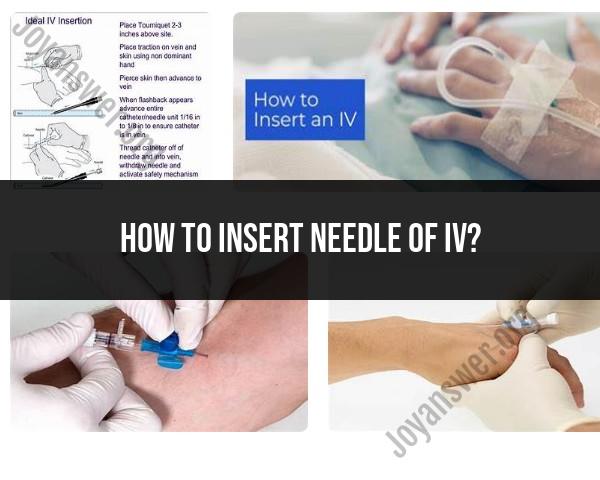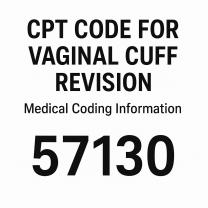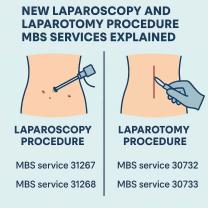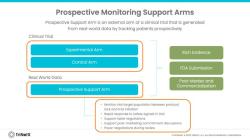How to insert needle of IV?
Inserting an intravenous (IV) needle requires precision, care, and adherence to proper techniques to ensure patient safety and comfort. Here’s a detailed guide on the proper techniques and procedures for inserting an IV needle:
1. Prepare the Materials
- IV catheter (appropriate size)
- Tourniquet
- Antiseptic wipes (alcohol or chlorhexidine)
- Sterile gloves
- IV extension set or tubing
- Saline flush
- Gauze pads
- Adhesive tape or securement device
- Sharps container
2. Prepare the Patient
- Explain the procedure to the patient to alleviate any anxiety.
- Ensure the patient is in a comfortable position with the selected arm extended and supported.
3. Select the Vein
- Apply the tourniquet about 4-6 inches above the intended insertion site.
- Look for a suitable vein, typically in the forearm or hand. The cephalic, basilic, or median cubital veins are commonly used.
- Once a vein is identified, release the tourniquet temporarily to prepare the site.
4. Clean the Insertion Site
- Put on sterile gloves.
- Clean the selected site with an antiseptic wipe in a circular motion, starting from the center and moving outward.
- Allow the site to air dry completely.
5. Reapply the Tourniquet
- Reapply the tourniquet to engorge the vein.
- Ensure the tourniquet is not too tight to avoid restricting arterial flow.
6. Insert the Needle
- Stabilize the vein by holding the skin taut with your non-dominant hand.
- Hold the IV catheter with your dominant hand, bevel up.
- Insert the needle at a 15-30 degree angle to the skin, aiming towards the vein.
- Once you see a flash of blood in the catheter's chamber (indicating you are in the vein), lower the angle slightly and advance the catheter a few more millimeters.
- Holding the needle steady, advance the catheter (plastic part) into the vein while withdrawing the needle.
7. Secure the Catheter
- Release the tourniquet.
- Apply pressure to the vein just above the catheter tip to prevent blood flow.
- Remove the needle entirely and engage the safety mechanism to avoid needle-stick injuries.
- Attach the IV extension set or tubing to the catheter hub.
- Secure the catheter with adhesive tape or a securement device.
8. Flush the Catheter
- Attach a saline flush to the IV tubing.
- Slowly flush the catheter to ensure it is patent (open) and properly placed.
- Look for any signs of infiltration (swelling, pain) around the insertion site.
9. Finalize the Procedure
- Secure the IV tubing with additional tape if necessary.
- Label the site with the date and time of insertion.
- Dispose of all used materials in appropriate containers, especially the needle in a sharps container.
10. Monitor and Document
- Check the IV site for signs of infection, infiltration, or other complications regularly.
- Document the procedure, including the size of the catheter used, the site of insertion, and any patient reactions or complications.
Tips for Successful IV Insertion
- Vein Selection: Choose a vein that feels firm, elastic, and refillable.
- Patient Hydration: Hydrated patients have fuller veins, making insertion easier.
- Warm Compress: Applying a warm compress can help dilate veins.
- Calm Approach: Stay calm and reassure the patient to reduce their anxiety.
By following these steps and tips, you can ensure a safe and effective IV insertion procedure.
What are the proper procedures for inserting an intravenous (IV) needle?
Inserting an intravenous (IV) needle is a sterile procedure that requires medical training and certification. Here's a general overview of the steps involved, but it's important to remember that I cannot provide actual medical advice.
Preparation:
- Introduce yourself to the patient and explain the procedure.
- Gather sterile supplies including needle, catheter, gauze, disinfectant wipes, tourniquet, and dressing.
- Wash hands thoroughly using an alcohol-based sanitizer.
Selecting a vein:
- Apply the tourniquet to engorge veins and choose an appropriate insertion site.
Disinfection:
- Cleanse the chosen area with an alcohol swab in a circular motion to disinfect.
Needle Insertion:
- With sterile technique, insert the needle at a specific angle into the vein.
- Observe for a flashback of blood to confirm proper placement.
Catheter Insertion:
- Once the needle is in the vein, advance the catheter through the needle.
Securing the IV:
- Secure the catheter with tape and apply a sterile dressing over the insertion site.
Documentation:
- Document the procedure and any observations in the patient's medical record.
Remember: This is a simplified overview. For accurate and detailed information on proper IV insertion procedures, refer to official medical resources or consult with a qualified medical professional.












